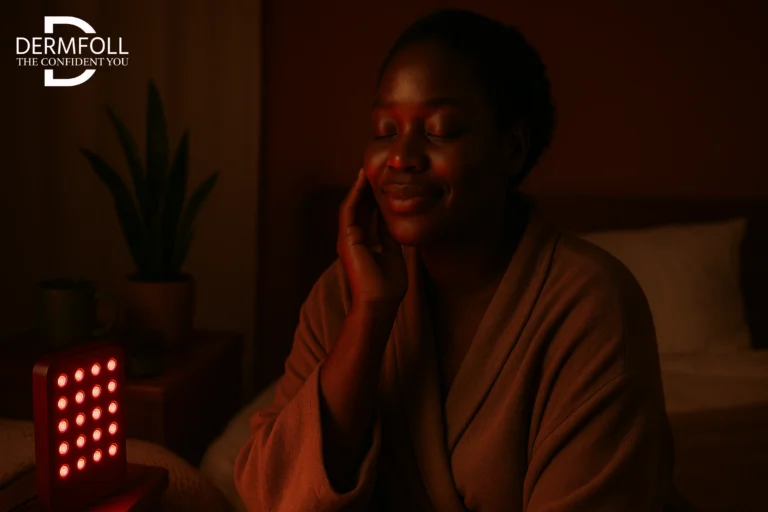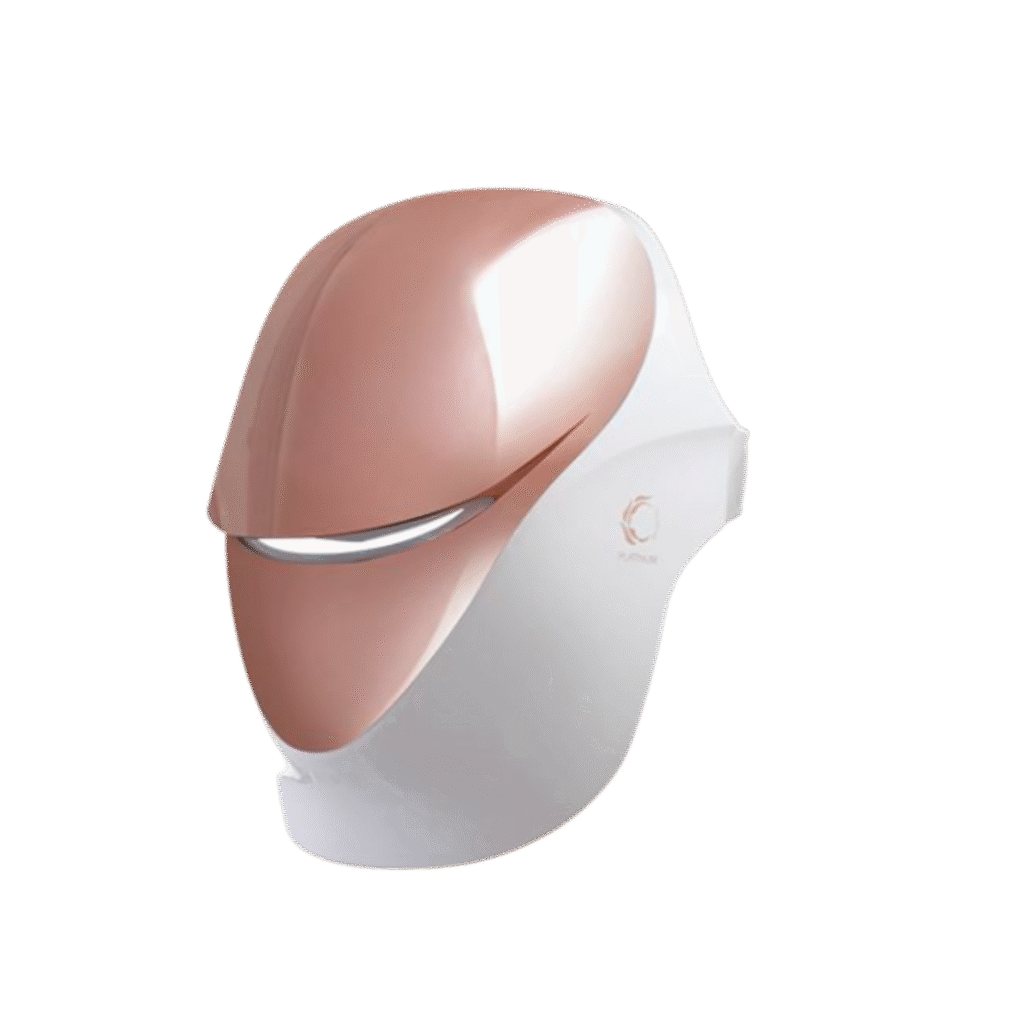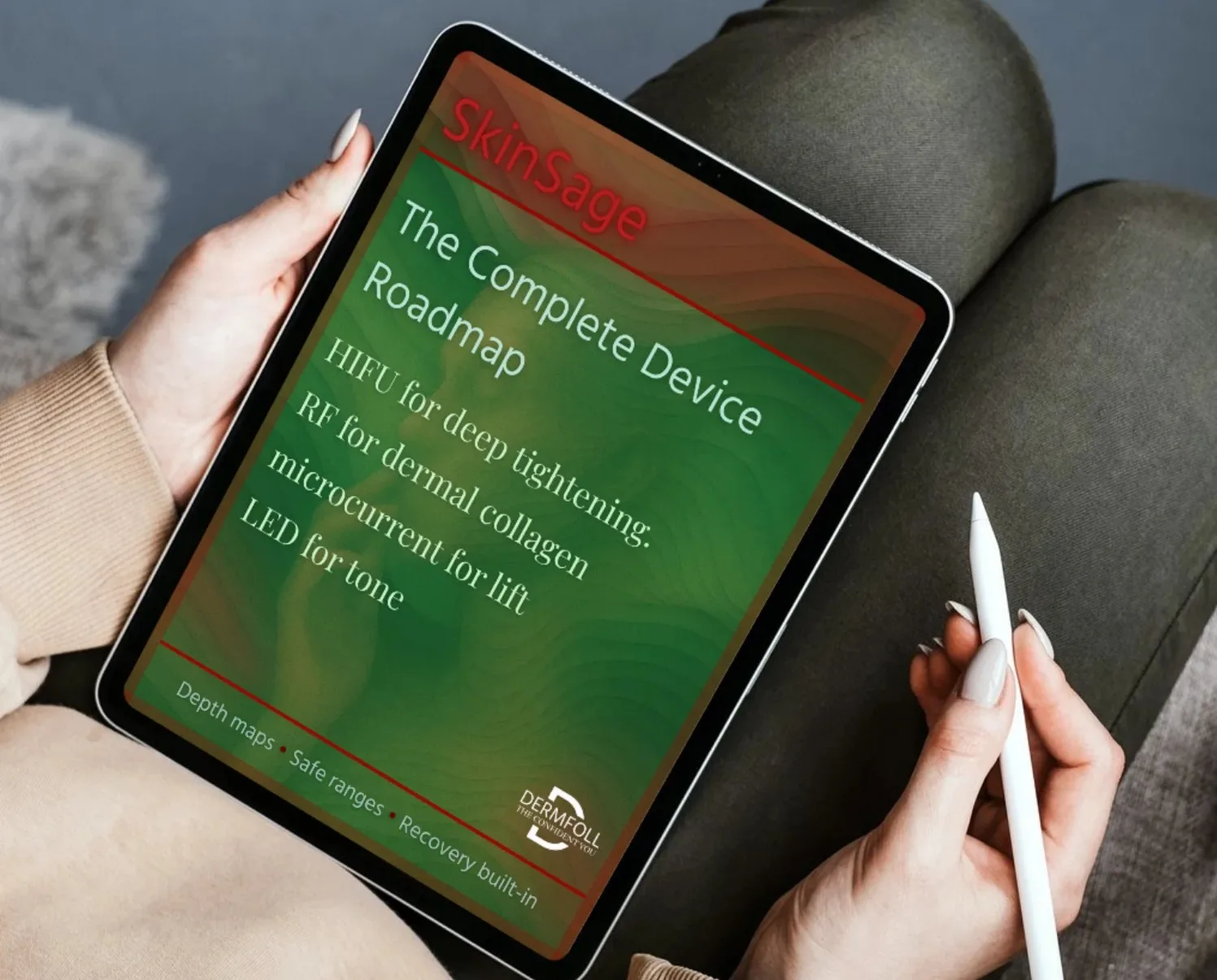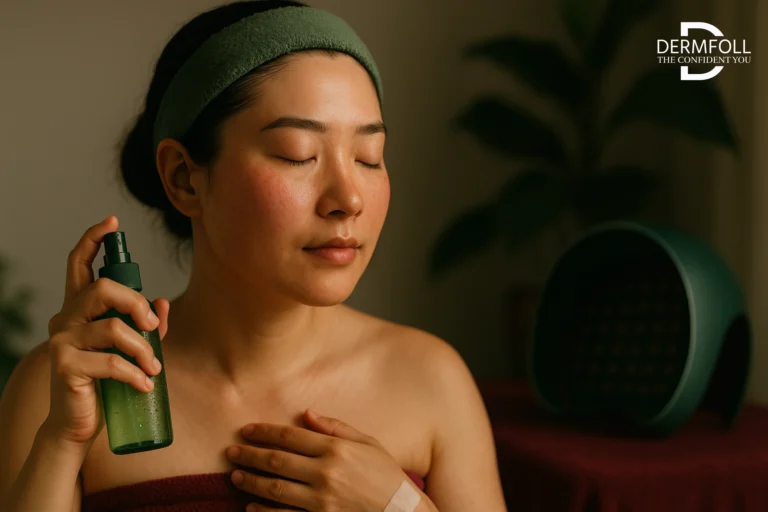Is My Skin Right For Red Light LED skin devices (Let’s Debunk That)
If you’ve ever wondered whether red light therapy is only meant for lighter skin tones, short answer, it doesnt.
It’s a super common concern – and one that deserves better answers than the vague stuff floating around on social media.
So let’s walk through what the science actually says about how red light LED skin devices interact with melanin-rich skin.
Spoiler: the results might surprise (and reassure) you.
Understanding Melanin’s Role – What Red LED Skin Devices Do (and Don’t) Interact With
First up, let’s clarify how red led light at home devices even work.
Unlike IPL (intense pulsed light) or laser resurfacing – which target melanin to break up pigment, red light LED skin devices functions on an entirely different process.
It doesn’t rely on pigment absorption at all.
Instead, it penetrates deeper into the skin and acts by stimulating mitochondria (the powerhouses of your skin cells) to promote energy generation.
Including collagen formation, and healing responses. That means it bypasses pigment – and that’s a good thing for deeper skin tones.
“Unlike photothermolysis-based systems, red and near-infrared wavelengths do not exhibit melanin-dependent absorption, making them suitable for all skin phototypes.” — “Low Level Light Therapy: Photobiological Mechanisms and Clinical Applications” by Dr. Maria Teresa Truchuelo et al.
In simpler terms? Red light LED skin devices specifically red led light at home devices dont interact with melanin the way lasers do, which makes it gentler and safer across a wide range of skin tones.
Clinical Findings Across Fitzpatrick Types For Red LED Light At Home Devices
Here’s what I love most: the studies are finally starting to reflect real-world diversity.
Multiple trials and clinical reviews have shown that red light therapy is well-tolerated by skin types I through VI. With very low rates of post-inflammatory hyperpigmentation (PIH) or adverse reactions.
“No statistically significant difference in treatment response or adverse effect frequency was observed between light and dark skin cohorts.” — “LED Light in Epidermis Hyperpigmentation”, Dr. Lotti et al.
Yes, red LED light at home devices are safe and works well for deeper tones, especially if you use it the right way and on a regular basis.
🔶 Discover the top red-light therapy solutions for deeper tones:
• CHOUOHC LED Photon Rejuvenation Mask – Uniform wraparound collagen boost
• CELLRETURN PLATINUM LED Wireless Mask – Dual red/IR deep repair
Protocol Tweaks for Deeper Tones – Smart Changes, Same Benefits
That being said, personalization is still important.
If you have skin with a lot of melanin, you might want to make a few wise changes. This is not because red light is dangerous, but because you are being proactive:
- Stay within the 620–660 nm range on your LED skin devices, which has been shown to help heal and boost collagen production.
- Start slow: 2–3 sessions per week is a great baseline while monitoring for any unusual dryness or sensitivity.
- Layer in barrier-supporting products after your session with red LED light at home device- think niacinamide, ceramides, or a lightweight humectant like hyaluronic acid.
- And of course, skip occlusives or SPF before a session – they can block light penetration. If you’re ever unsure, using red light therapy after skincare only works if your product doesn’t reflect or scatter light.
Bottom line? Deeper skin tones don’t need a different tool – just a thoughtful approach.
Customizing Red Light LED Skin Devices For Melanin-Rich Skin – What Really Works
Once you’ve moved past the “Is it safe for my skin tone?” question (short answer: yes), the next step is figuring out how to make red LED light at home therapies really work for you.
This is where it gets exciting – because while red light LED skin devices are broadly safe across all skin tones.
Melanin-rich skin can benefit from some smart, science-backed tweaks to get the most glow with the least risk.
Let’s dig into it.
Finding the Right Wavelength – Why 630–660 nm Is Your Sweet Spot
Not all red light is made equal. For skin types IV, V, and VI on the Fitzpatrick scale, wavelength selection matters – especially when you’re seeking for results without provoking inflammation or color alterations.
Wavelengths between 630–660 nanometers are excellent.
Why? They’re lengthy enough to penetrate deep into the dermis (where collagen resides). But not so intense that they risk surface-level heat buildup or discomfort.
“The depth and selectivity of red light within the 630–660 nm range supports collagen stimulation with minimal risk to melanin-dense skin.” — Low Level Light Therapy: Photobiological Mechanisms and Clinical Applications
This is the sweet spot – especially for those managing both glow goals and pigment-prone skin.
Session Timing and Frequency – What Dermatologists Suggest for Fitzpatrick IV–VI
Here’s where personalization really matters. Just because red light LED skin devices are non-invasive doesn’t mean it’s one-size-fits-all.
Especially for red LED light at home Devices.
If you have a deeper skin tone, starting slow is smart. Think of it as building skin endurance – not blasting it. Dermatologists often recommend:
- 8–10 minute sessions, 2–3 times a week to start
- Watch for signs of over-drying, tightness, or delayed healing (those are flags to scale back)
- Build gradually to 4–5x/week if your skin tolerates it well
The goal here is consistency, not intensity. Like with exercise, your skin builds results over time—not in one big push.
🔶 Discover the top red-light therapy solutions for deeper tones:
• CHOUOHC LED Photon Rejuvenation Mask – Uniform wraparound collagen boost
• CELLRETURN PLATINUM LED Wireless Mask – Dual red/IR deep repair
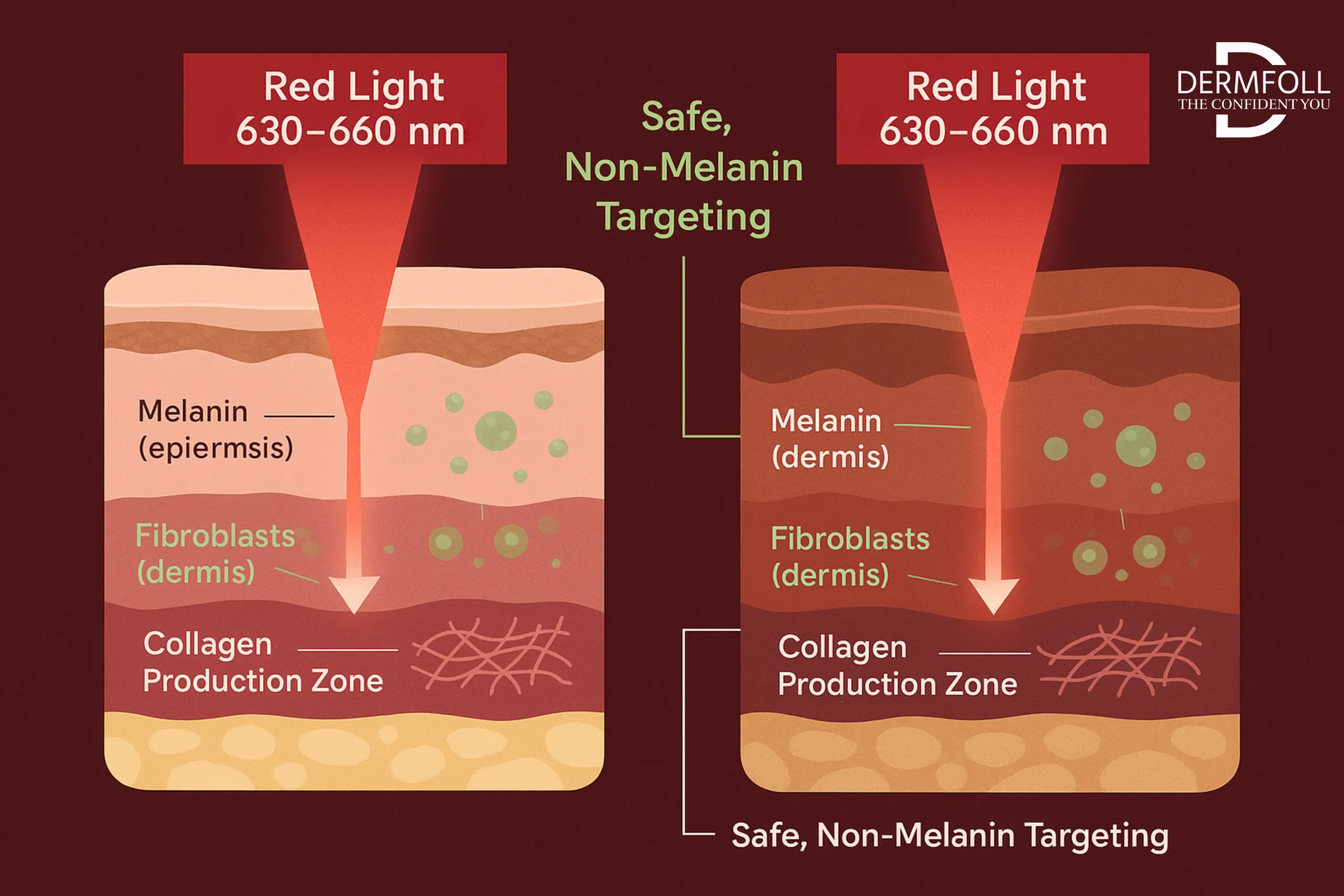
Boosting Benefits Without Irritation – Skincare Pairings for Resilient Results
You’ve done your session – now what? Post-care matters, especially when you’re working with melanin-rich skin where barrier support and pigment stability are key.
Here’s what to reach for after red light therapy:
✅ Do use:
- A hydrating toner or mist with glycerin or aloe
- A moisturizer rich in ceramides, cholesterol, or niacinamide
- Lightweight antioxidants like vitamin C derivatives (MAP, SAP) or green tea polyphenols
❌ Avoid right after:
- Harsh exfoliants (AHAs, BHAs, or retinoids)
- Fragrance-heavy or alcohol-based toners
- Occlusive layers before your session (they block light penetration)
“Barrier repair strategies post-photobiomodulation enhance structural resilience and reduce transepidermal water loss.” — Regulation of Skin Collagen Metabolism In Vitro, Harvard Medical School
The better your barrier, the better your glow – and the lower your risk of post-inflammatory pigmentation.
CONCLUSION
If you’ve ever second-guessed whether red LED light at home therapy was made with your skin tone in mind, I hope this helped clear the air – and the doubt.
We now know that red light doesn’t just work for melanin-rich skin – it can actually work beautifully, if you use it right.
Let’s recap what we’ve covered:
- Red light doesn’t target melanin, which is why it’s safer for Fitzpatrick types IV–VI than pigment-based devices like lasers or IPL.
- Clinical studies confirm that LED skin devices are well-tolerated across diverse skin tones, with low risk of irritation or hyperpigmentation.
- The sweet spot? 630–660 nm, especially when you’re aiming for collagen, healing, and barrier support without triggering pigment shifts.
- Thoughtful use – like shorter sessions, gentle skincare afterward, and consistency over intensity can make all the difference.
- And yes, when it comes to pairing red LED light at home with skincare, the right support (hydration, barrier care) will amplify results without added risk.
In short: your skin isn’t just “right” for red light—it might actually thrive with it.
🔶 Discover the top red-light therapy solutions for deeper tones:
• CHOUOHC LED Photon Rejuvenation Mask – Uniform wraparound collagen boost
• CELLRETURN PLATINUM LED Wireless Mask – Dual red/IR deep repair
💡 Coming Next: Blue Light Therapy – Targeting Acne at the Source with Precision Light
Red light’s the repair crew. But if you’re battling active breakouts, what about prevention?
Up next, we’re switching spectrums and diving into blue light therapy – how it targets acne-causing bacteria at the source. We’ll cover the science, the protocols, and whether blue light belongs in your breakout routine.


